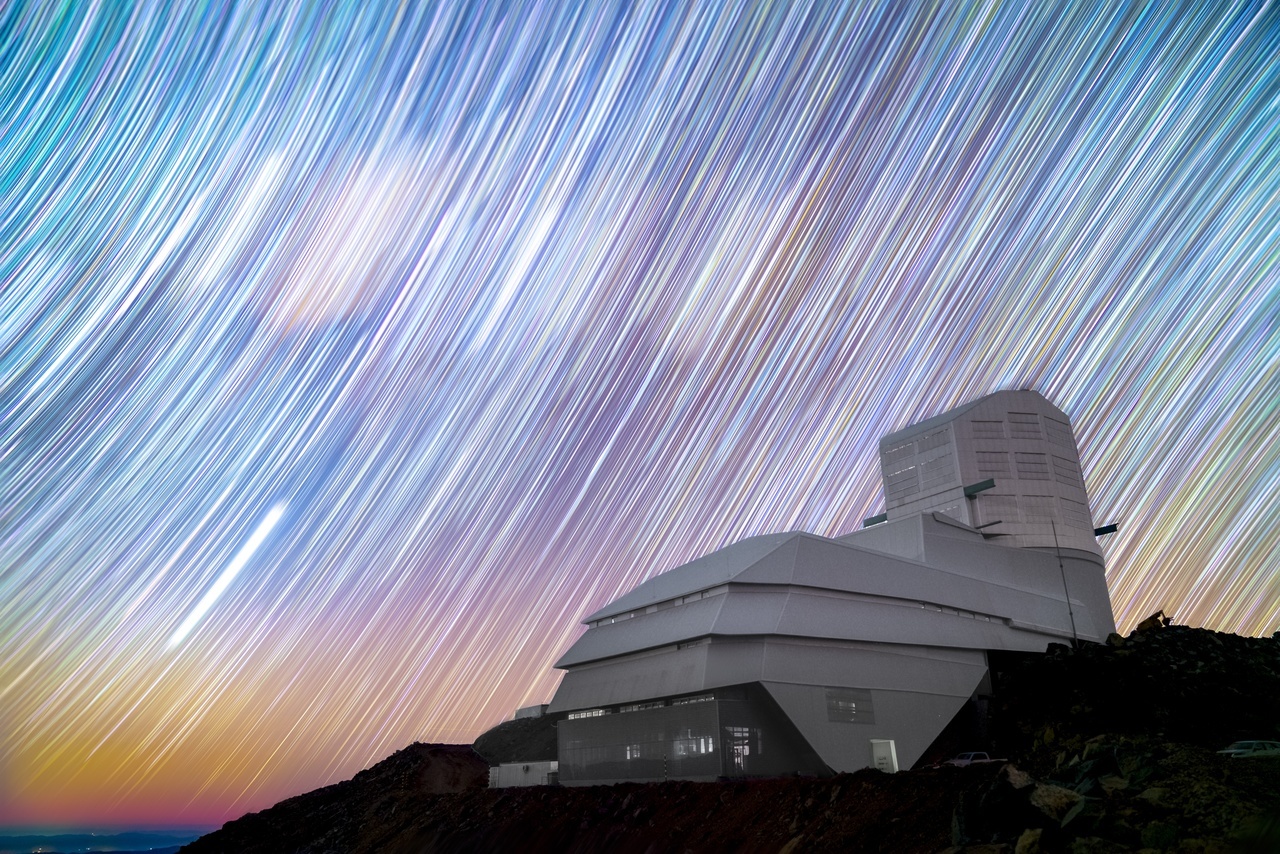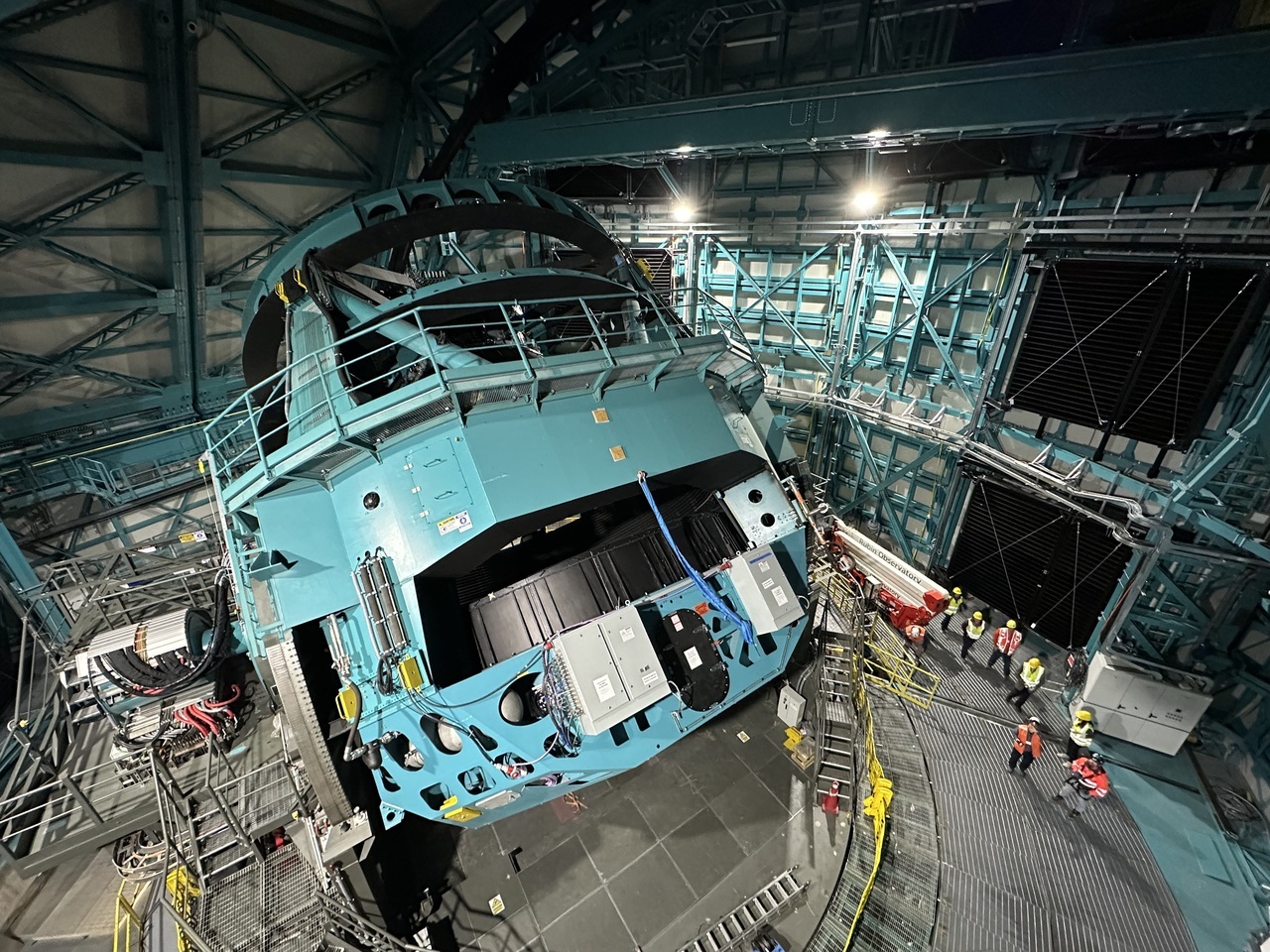Follow us on Google News (click on ☆)

The Vera C. Rubin Observatory is located atop Cerro Pachón at an altitude of 8,530 feet (2,600 meters) in Chile. It benefits from exceptionally clear skies year-round at this site.
Credit: Hernan Stockebrand.
This program, called LSST (Legacy Survey of Space and Time), aims to produce the first animated portrait of the observable Universe, from objects in the solar system to the most distant galaxies. It will also provide an unprecedented amount of data for studying dark energy, dark matter, the many transient phenomena of the Universe, and the countless solar system objects yet to be cataloged. Here's an overview of this project, which relies on significant contributions from the CNRS.
On June 23, the LSST collaboration unveiled the first images taken with its brand-new ground-based telescope installed at the Vera C. Rubin Observatory in Chile. Its mission will be to probe the depths of the entire cosmos in the southern hemisphere for 10 years.
The LSST program aims to explore the mysteries of the Universe at all scales, from our solar system to the most distant galaxies. Led by the United States, it brings together a broad international scientific community, with French scientists playing a major role. The project revolves around an exceptional facility located at a Chilean site over 8,530 feet (2,600 meters) above sea level, where clear nights and atmospheric purity offer ideal conditions for astronomical observation.
A sweeping view of the sky
The LSST program will cover an astonishingly diverse range of topics, including the study of dark matter—a substance abundant in the Universe, detectable through its gravitational effects but invisible to our instruments—as well as dark energy, another enigmatic phenomenon that appears to accelerate the current expansion of the Universe. It will also investigate galaxy formation, the origins of the solar system, and, more broadly, all transient phenomena, both near and far, in the Universe.
Indeed, the Rubin Observatory doesn't just observe static celestial bodies: by capturing a complete image of the sky every three days and comparing it to previous ones, it will create a true film of the Universe, revealing all the movements of solar system objects and our galaxy, variations in stellar brightness, star explosions, and more. Every night, scientists expect to detect millions of these changes.

The dome houses a one-of-a-kind telescope capable of photographing enormous portions of the sky in a single shot with ultra-high definition. It features a three-mirror system to keep it compact and extremely agile, allowing it to reposition in just 5 seconds. To photograph the sky, it is equipped with a giant digital camera.
Credit: RubinObs/NSF/AURA/A. Alexov.
Half the Universe under surveillance
In other words, Rubin is putting half the entire Universe under surveillance, and to achieve this, scientists have designed a truly unique telescope. With a diameter of 27.5 feet (8.4 meters), the Simonyi Telescope was built to capture vast portions of the sky in a single glance. Its exceptionally wide field of view equals 40 full moons. Its three-mirror optics also make it a highly compact instrument, capable—despite weighing 55 metric tons (60.6 short tons)—of positioning itself with extreme precision in just seconds.
At the heart of the telescope, installed since March 2025, lies the LSST camera, a true technological marvel and the key component of the instrument: it is the largest digital camera in the world.
Its focal plane, composed of a mosaic of 189 CCD sensors, will capture the faintest glimmers of the Universe in ultra-high definition. At a staggering rate of 800 shots per night—each covering a vast celestial field in different wavelengths—the telescope will survey the entire southern sky in just three nights. Over 10 years, the cumulative number of views of the Universe will exceed a thousand.
A filter system for precision
To extract information about the nature and distance from Earth of celestial objects, the camera uses a set of filters covering a broad spectrum of wavelengths. These filters are alternately placed in front of the camera lens via an automated system entirely designed and assembled in France.
This system is the result of collaboration between several CNRS laboratories: LPNHE (CNRS - Sorbonne Université), CPPM (CNRS - AMU), LPSC (CNRS - UGA), LPCA (CNRS - UCA), and IP2I (CNRS - Université Lyon 1). It allows for the rapid and submillimeter-precise selection of the most suitable filter for each observation. It combines a storage carousel capable of holding up to 5 filters, an automated arm that positions a filter in front of the focal plane with 0.1mm precision, and a loading module.
This painstaking work is the culmination of years of research and refinement, from design to the prototype's inauguration in 2018 and finally the system's full integration into the camera in Chile in 2024.
The construction of the LSST camera, carried out by the SLAC laboratory in the U.S., also benefited from other CNRS contributions. French teams notably participated in manufacturing the electronic circuits dedicated to sensor readout, establishing calibration procedures, and defining the optical filters for fine analysis of captured light.
The data processing challenge
Observing the sky with such intensity also requires rethinking data processing. Every image captured by the LSST camera must be analyzed, categorized, archived, and made available to scientists, often in near real-time. The volume is staggering: millions of celestial objects identified, alerts to detect and redistribute continuously, and catalogs to build as observations progress.
In total, 500 petabytes of data (around 1017 bytes) will be generated over the ten years. But thanks to the data processing system, "only" 15 petabytes will be stored in the catalogs.